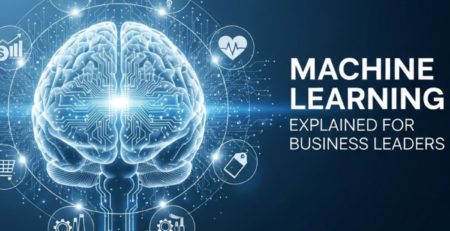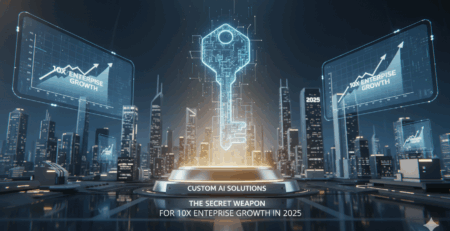Enterprise Resource Planning The Backbone of Modern Business
DSSP2025-11-04T11:30:06+00:00What Is Enterprise Resource Planning( ERP)?
Enterprise Resource Planning (ERP) refers to an intertwined software system that helps associations manage and automate core business functions similar to finance, HR, procurement, manufacturing, force chain, and further all within a centralized platform.
In simple terms, ERP acts as the digital whim-whams center of an association. It connects different departments, enabling flawless data inflow, better visibility, and smarter decision- timber.
Rather than counting on disconnected tools or spreadsheets, ERP unifies all business operations under one system, icing that everyone, from finance brigades to operations directors, works with accurate and over- to- date information.
Why ERP Matters in moment’s Business Landscape
ultramodern businesses are more complex and presto- paced than ever. Global force chains, remote workforces, and real- time client demands produce immense functional pressure. Without a connected system, managing these moving corridor becomes chaotic and hamstrung.
That’s where ERP results step by. They help associations
- Exclude data silos
- Reduce homemade trouble
- Gain practicable perceptivity
- Ameliorate collaboration across departments
According to Gartner, over 95% of growing businesses witness measurable advancements in functional effectiveness within two times of enforcing ERP systems.
For business leaders, ERP is n’t just software, it’s a strategic enabler of growth, dexterity, and adaptability.
Core Functions of an ERP System :
An ERP system is designed to polarize and streamline a company’s essential operations. Let’s explore its primary modules and how they work together
- Financial Management :
- Automates account, budgeting, and reporting
- Provides real- time fiscal perceptivity
- Ensures compliance with regulations and norms
- Resource Management( HRM) :
- Tracks hand records, payroll, and performance
- Streamlines reclamation and onboarding processes
- Improves pool planning and analytics
- Supply Chain Management( SCM) :
- Manages procurement, force, and logistics
- Tracks goods from suppliers to guests
- Optimizes force situations and delivery times
- Client Relationship Management( CRM) :
- Integrates client data for substantiated gests
- Automates supereminent shadowing, deals, and marketing workflows
- Enhances client service and retention
- Manufacturing and Production :
- Schedules product runs
- Tracks accoutrements ,ministry, and coffers
- Ensures quality control and cost effectiveness
- Procurement :
- Automates seller operation and purchase orders
- Provides spend analytics and blessing workflows
- Improves cost control and seller connections
- Project Management :
- Observers budgets, mileposts, and resource allocation
- Enables collaboration between brigades
- Tracks design profitability and delivery timelines
Each module operates singly but shares data within the ERP system, icing unified visibility and collaboration across all departments.
How ERP Systems Work :
ERP systems operate on a centralized database that stores all business information. This ensures that every department accesses real- time data with no duplication, no crimes, and no detainments.
Then’s a simplified inflow
- Data Entry Information is entered formerly and incontinently available to all departments.
- Integration Modules communicate seamlessly for illustration, a deals order automatically triggers force updates and tab creation.
- Robotization Routine processes like payroll, purchase orders, or expenditure blessings be automatically.
- Reporting Dashboards give real- time perceptivity into company performance.
- Scalability pall- grounded ERP systems can grow as your business expands.
This position of integration allows for lesser translucency, briskly decision- timber, and more effective resource allocation.

Types of ERP Systems
Different associations have different requirements. ERP systems come in colorful forms to fit those conditions
- On- Premise ERP :
- Installed locally on company waiters.
- Offers complete control and customization.
- Requires in- house IT conservation and advanced outspoken cost.
- Pall- Grounded ERP :
- Hosted on a seller’s pall platform.
- Accessible anywhere, anytime, via the internet.
- Lower original costs and easy scalability.
- Mongrel ERP :
- Combines both pall and on- premise results.
- Offers inflexibility for associations transitioning to the pall.
- Assiduity-Specific ERP :
acclimatized for unique assiduity needs e.g., healthcare, manufacturing, or retail. Comes withpre-configured workflows and compliance features.
Benefits of ERP perpetration
Enforcing ERP brings measurable advancements across every position of the association. Then are the most significant benefits
- Unified Data and Visibility : ERP centralizes all information, icing brigades work with accurate, harmonious data. This eliminates data silos and supports better decision- timber.
- Bettered Productivity : Robotization reduces homemade tasks similar to data entry, conciliation, and report generation allowing workers to concentrate on strategic work.
- Real- Time perceptivity : ERP dashboards give real- time analytics on performance criteria , helping leaders make informed, visionary opinions.
- Cost Savings : Streamlined processes and reduced redundancies restate to lower functional costs over time.
- Enhanced client Satisfaction : With accurate force data, briskly response times, and better service delivery, guests enjoy a flawless experience.
- Regulatory Compliance : Erected- in compliance operation helps associations meet assiduity norms similar as ISO, GDPR, or SOX.
- Scalability : As your company grows, ERP systems can fluently acclimatize adding new modules or druggies without major overhauls.
- Bettered Collaboration : Departments work together painlessly through participated data and formalized workflows.
That Benefit Most from ERP :
ERP systems are protean and can be applied across multiple diligence
Manufacturing : Streamlines product scheduling, force chain, and quality control.
Healthcare : Manages patient data, billing, and compliance with healthcare regulations.
Retail : Unifies force, POS, and client operation across stores.
Construction : Tracks design costs, procurement, and resource allocation.
Education : Manages admissions, finance, and HR in seminaries or universities.
Government : Improves translucency, budgeting, and resource allocation.
No matter the assistance, ERP enables associations to connect data, people, and processes in one digital ecosystem.
Challenges in enforcing ERP Systems
Despite their value, ERP executions can be complex. Understanding implicit challenges outspoken ensures a smoother rollout.
- High original Investment : ERP systems can bear significant setup costs, including licensing, customization, and training. pall- grounded results can alleviate these charges.
- Resistance to Change : Workers oriented to heritage systems may repel espousing new workflows. Leadership support and stoner training are vital to prostrating resistance.
- Data Migration Issues : Transferring old data into a new ERP can be tricky crimes or duplicates can beget dislocation. Proper planning and testing are essential.
- Integration with Being Systems : Integrating ERP with tools( like CRM or HRM software) can be technically grueling . APIs and middleware help ensure smooth connectivity.
- Customization Complexity : Over-customizing an ERP can make conservation delicate. It’s stylish to use standard configurations where possible.
- Seller Dependence : Choosing the wrong seller can lead to community or support issues. Research, reviews, and scalability considerations are crucial before committing.
Stylish Practices for Successful ERP perpetration :
To insure a flawless ERP rollout, businesses should follow these proven stylish practices
- Define Clear objects : Figure specific pretensions whether it’s perfecting reporting, automating workflows, or enhancing client service.
- Choose the Right seller : Estimate ERP providers grounded on scalability, assiduity fit, integration capabilities, and client support.
- Engage Stakeholders Early : Involve workers from different departments in planning and decision- timber. This promotes power and reduces resistance.
- Prioritize Data Accuracy : Clean and regularize data before migration. Inaccurate data can compromise the system’s integrity.
- Invest in Training : Comprehensive stoner training ensures workers can work the full eventuality of the ERP system.
- Examiner and Optimize : After deployment, continuously track KPIs like process time reduction, error rates, and cost savings. Use analytics to upgrade workflows.
Popular ERP Software results
Then are some of the leading ERP platforms used by associations worldwide
ERP Solution Ideal For crucial Features
SAP S/ 4HANA : Large enterprises Real- time analytics, AI- powered robotization, global scalability
Oracle : NetSuite Mid to large businesses Cloud ERP, financials, CRM, and eCommerce
Microsoft : Dynamics 365 SMBs & enterprises Flexible modules, integrations, Power BI analytics
Odoo SMEs Open- source, modular, and customizable
Infor CloudSuite Industry-specific businesses Pre-configured perpendicular results
Workday HR & finance- centric enterprises HR, payroll, and fiscal operation
Each platform offers unique advantages the right choice depends on your association’s size, assiduity, and long- term pretensions.
ERP Trends Shaping the unborn
ERP technology continues to evolve, driven by digital metamorphosis and AI invention. The following trends are shaping the coming generation of ERP systems
- Cloud first ERP Relinquishment : Cloud grounded ERP dominates due to its inflexibility, scalability, and remote availability.
- AI and Machine Learning Integration :AI- enhanced ERP predicts demand, identifies inefficiencies, and automates decision- timber.
- Real- Time Analytics and Dashboards :
Businesses are shifting from stationary reports to live data dashboards for instant perceptivity.
- Mobile ERP : Mobile access enables workers to manage tasks, blessings, and reports from anywhere.
- Hyperautomation : ERP systems are being integrated with robotic process robotization( RPA) and workflow robotization tools for end- to- end digitization.
- Enhanced Security and Compliance : With growing data pitfalls, ERP merchandisers concentrate heavily on encryption, authentication, and compliance fabrics.
Measuring ERP Success
To insure your ERP investment delivers value, track performance through measurable KPIs similar as
- Process Cycle Time Reduction
- Cost Savings from robotization
- stoner Relinquishment Rate
- Error Reduction Rate
- ROI from ERP perpetration
Client Satisfaction Scores Regularly reviewing these criteria ensures your ERP system continues to align with business pretensions.
Conclusion
In today’s competitive business landscape, Enterprise Resource Planning (ERP) has evolved from being just an operational tool to becoming the backbone of modern enterprises. By integrating finance, HR, supply chain, customer management, and analytics into a single unified platform, ERP empowers organizations to make data-driven decisions, enhance productivity, and adapt quickly to change.
However, successful ERP implementation goes beyond technology it requires a clear strategy, strong leadership, and continuous optimization. Businesses that embrace ERP systems with a long-term vision gain a significant edge in agility, efficiency, and growth.
At DataDot Labs, we help organizations design and implement intelligent ERP solutions tailored to their goals, ensuring seamless operations and measurable business value. The future of enterprise success lies in connected systems and ERP is the foundation that makes it possible.














